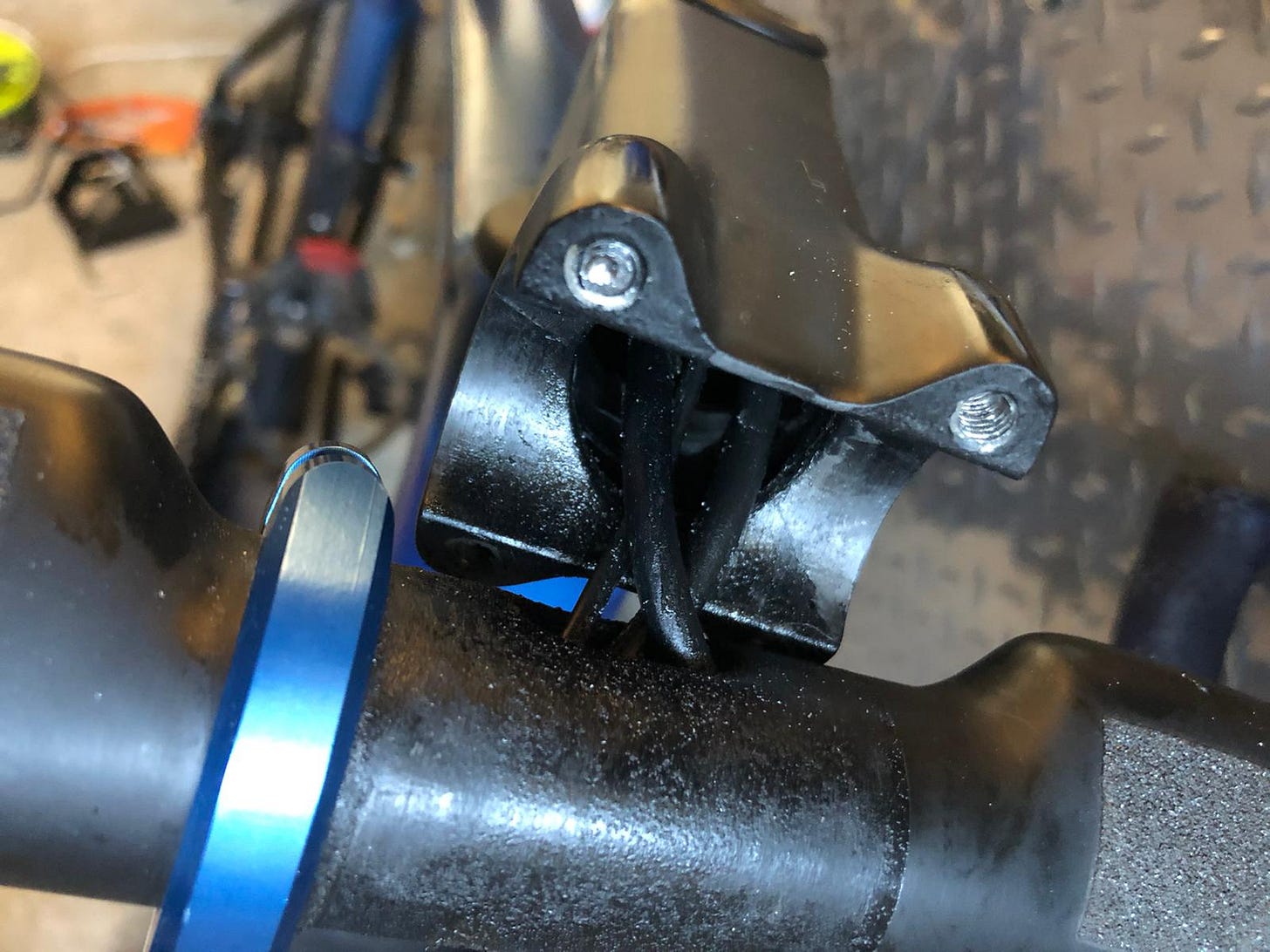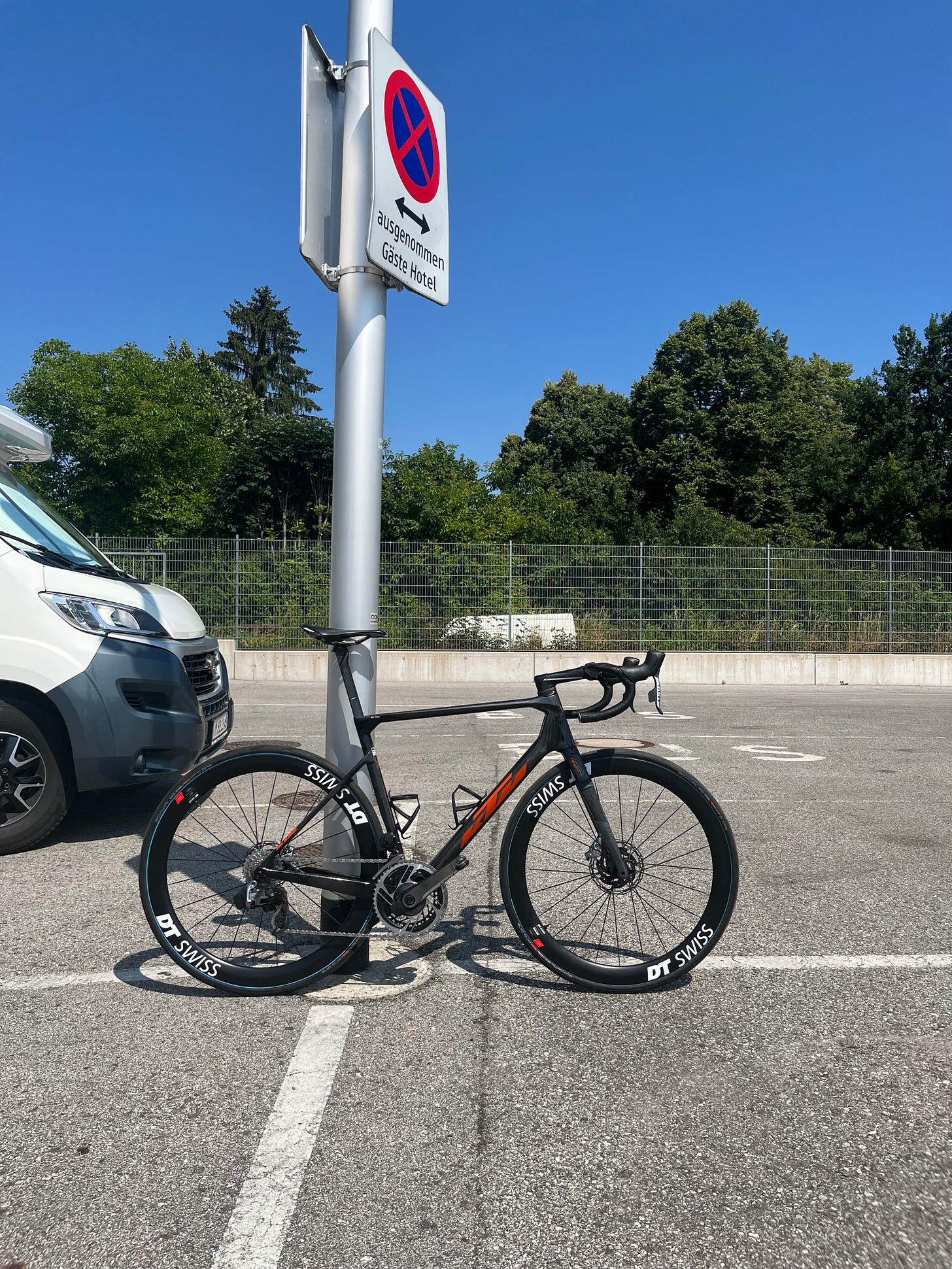Fixing bikes, done a little differently
A rundown on my variable relationship with bike mechanics. The act of fixing bikes that is, not the people, they're generally a lovely bunch.
If you use a bike for long enough, there’ll come a point where certain parts need replacing, fixing or upgrading (OK, that last one’s less of a need, more a choice - just tell your significant other it’s a necessity). Where most people would feel this an appropriate time to visit their local bike shop, with its array of tools and qualified personnel, I tend to prefer to charge headlong into the task myself.
Now, given the number of years I’ve spent around bikes, it’s got to the stage that I know my way around them reasonably well - the emphasis there is on reasonably. By no means am I going to be a WorldTour mechanic anytime soon, but I know how to fix the majority of problems better than most. The way the parts work together, when functioning properly, seems to just “work” in my mind’s eye. I love the relative simplicity of each individual element working in harmony with the others, all performing a vital role to create an overall machine that functions exactly as designed.
That familiarity with the way the parts of a bike connect means I can fix the majority of problems when they arise, sometimes in the way they’re supposed to be fixed, other times in the Mattie Dodd way. This roundabout method involves a bit more grunting, creaking, fiddling and swearing, before essentially arriving at the same end point I would have reached had I had the patience to watch ten minutes of a YouTube video. Many of these tasks I’ll approach without any prior knowledge of how to do it, more just with the confidence that I know how it roughly should work, based on the image I’ve built in my head of the way each component functions.

Now, often my overenthusiastic, under-thought-out methods works quite well. I’ll have correctly built up the image in my head, find what I’m expecting on the bike, then fix it as I intended. There are, however, certain problems that come about with my way of doing things. The majority arising from the fact that no one has ever showed me how to do this stuff and I’m essentially making it up as I go along.
For example, take an attempt to install a pair of cranks on a track bike. That should be fairly simple right? No gears to worry about, just get the right spacing, tighten up a few bolts and away we go. At least, that was the picture I’d built up in my mind’s eye. Upon completing this process, a significant amount of play still remained coming from the axle. I tried multiple different things, including actually looking it up on the internet for once, before being left in a mess of desperation and perspiration and with two cranks still not correctly attached to the bike. Finally relenting, I ended up in the local bike shop with my tail between my legs.
My mechanical abilities have certainly drastically improved over the years to what they are now. From the age of about nine, through to age thirteen or so, I’d say a good third of the bolts I touched ended up totally rounded out or with the threads no longer in existence. Eventually, I began to come to my senses, and realised that the appropriate method to ensure a part was properly attached was using a torque wrench, rather than engaging in a pitched battle with a ten millimetre piece of metal until one of us gave way. “Tighten until the click, not until you hear carbon cracking” - that would have been a massively time-saving piece of advice when given to nine-year old Mattie along with a torque wrench.
It’s now got to the stage where, aged nineteen, I really enjoy fixing bikes. Having come around and now being able to use that “mind’s eye” more effectively, I can sort the majority of problems pretty easily. Given my experiences as a young teenager, it often leaves a sense of “is that it?” having fixed something without the multiple hours of swearing, sweating and fiddling that past Mattie would have taken to get to the same point. I feel I get a genuine sense of relaxation from toying around with bikes, often finding that I’m a little disappointed that there’s not more things to do on them.
That still doesn’t entirely eliminate the occasional time when I find myself utterly frustrated by bikes, and the way that certain parts last for a far shorter time period than needed before deciding they need imminent retirement. There are also still certain parts that I won’t go near, hydraulic cables being the main example. It’s times like this when I thank the mechanical god, a.k.a Wilf Sinclair, Pearson Cycles master mechanic, that he exists to bail me out of situations that see me crashing headlong into a brick wall due to total brake failure. In fact, he’s bailed me out of more bike maintenance tight spots that I wish to disclose. He, and any other bike shop mechanic, can just be thankful that I’ve progressed from the way I used to approach fixing bikes ten years ago - that was utter chaos.






Enjoyed this read Mattie. Good tips here on being able to visualise a problem, in order to fix it. Lessons for life as well as bikes.